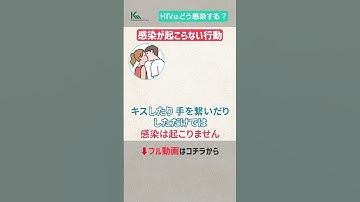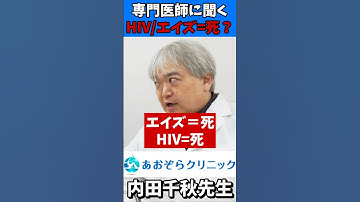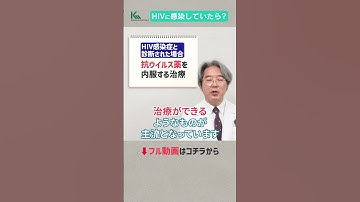HIV/AIDS
What is HIV/AIDS?
HIV/AIDS
HIV/AIDS is a major global public health issue. The term refers to a spectrum of conditions caused by infection with the Human Immunodeficiency Virus (HIV). It is not a movie, book, or brand, but a medical condition that has had a profound impact on society, culture, and science worldwide.
What Are HIV and AIDS?
-
HIV (Human Immunodeficiency Virus): This is a virus that attacks the body's immune system. Specifically, it targets the CD4 cells (a type of T cell), which are crucial for fighting off infections. If left untreated, HIV reduces the number of CD4 cells in the body, making the person more vulnerable to other infections and diseases.
-
AIDS (Acquired Immunodeficiency Syndrome): This is the most advanced stage of HIV infection. A person is diagnosed with AIDS when their immune system is so severely damaged that they develop certain opportunistic infections or cancers, or when their CD4 cell count drops below a critical level (200 cells/mm³).
It is important to note that a person can have HIV without having AIDS. With proper medical care, many people with HIV never progress to AIDS.
Transmission and Prevention
Understanding how HIV is transmitted is key to preventing its spread and combating stigma.
HIV is transmitted through:
- Unprotected sexual contact (vaginal, anal, or oral) with an infected person.
- Sharing needles, syringes, or other drug-injection equipment contaminated with infected blood.
- From a mother to her child during pregnancy, childbirth, or breastfeeding.
- Receiving infected blood transfusions or organ transplants (this is now extremely rare in countries with rigorous screening processes).
HIV is NOT transmitted through:
- Air or water.
- Insects, including mosquitoes or ticks.
- Saliva, tears, or sweat (that is not mixed with the blood of an infected person).
- Casual contact like shaking hands, hugging, or sharing toilets, dishes, or food.
Key Prevention Methods:
- Condoms: Consistent and correct use of condoms during sex.
- Testing: Regular HIV testing to know one's status.
- PrEP (Pre-Exposure Prophylaxis): A daily medication for HIV-negative people at high risk, which can significantly reduce the risk of getting HIV.
- PEP (Post-Exposure Prophylaxis): A course of antiretroviral drugs taken within 72 hours after a possible exposure to HIV to prevent infection.
- Treatment as Prevention (TasP): People with HIV who take their medication (ART) daily as prescribed and achieve and maintain an undetectable viral load have effectively no risk of sexually transmitting the virus to an HIV-negative partner. This is known as U=U (Undetectable = Untransmittable).
Treatment and Living with HIV
While there is no cure for HIV, it is a manageable chronic health condition.
- Antiretroviral Therapy (ART): This is the use of HIV medicines to treat the infection. It involves taking a combination of drugs daily. ART cannot cure HIV, but it can reduce the amount of virus in the body (the viral load) to a very low level, a state known as viral suppression.
- Living a Healthy Life: With effective ART, people with HIV can live long, healthy lives and have a life expectancy close to that of the general population. The U=U principle has also been revolutionary in reducing stigma and empowering people living with HIV.
Global Impact: A Statistical Snapshot
The global response to HIV/AIDS is one of the most significant public health efforts in history. Organizations like UNAIDS and the World Health Organization (WHO) track its impact.
| Metric (2022 Estimates) | Global Figure |
|---|---|
| People globally living with HIV | 39.0 million |
| People newly infected with HIV | 1.3 million |
| AIDS-related deaths | 630,000 |
| People on antiretroviral therapy (ART) | 29.8 million |
| Women and girls living with HIV | 19.7 million |
Source: UNAIDS Global HIV & AIDS statistics — 2023 fact sheet
Awareness and Culture
- World AIDS Day: Observed on December 1st every year, it is a day dedicated to raising awareness of the AIDS pandemic, mourning those who have died of the disease, and celebrating victories like increased access to treatment and prevention services.
- The Red Ribbon: The red ribbon is the universal symbol of awareness and support for people living with HIV.
View questions by category
HIV/AIDS Basics
Answers common questions about the basic definitions and differences of HIV/AIDS, virus characteristics, and non-transmission routes.
Transmission Routes & Risks
Explains the main transmission routes of the HIV virus, including sexual contact, bloodborne transmission, and mother-to-child transmission, and assesses the associated risks.
Disease Progression & Symptoms
Introduces the progression of HIV infection from the acute phase and asymptomatic period to the AIDS stage, including related symptoms and opportunistic infections.
Testing & Diagnosis
Covers the importance of HIV testing, main methods, window period, interpretation of results, and related privacy protection issues.
Prevention Strategies & Measures
Presents various effective strategies and methods for preventing HIV transmission, including condoms, PrEP, PEP, and prevention of mother-to-child transmission.
Treatment & Health Management
Explains antiretroviral therapy for HIV, key monitoring indicators, treatment goals, and important concepts like U=U (Undetectable = Untransmittable).
Social, Psychological & Rights Issues
Discusses HIV-related stigma, discrimination, mental health, legal rights, life expectancy, and how to interact harmoniously with people living with HIV.
Key Populations & Epidemiology
Focuses on the specific challenges and needs faced by key populations (such as MSM, women, adolescents, the elderly) in HIV prevention and control.
Global Response & Public Health
Explores the global AIDS epidemic, response strategies of international organizations, public health policies, and socio-economic impacts.
Scientific Frontiers & Future Outlook
Focuses on scientific frontiers related to HIV, including virology research, the search for a cure, vaccine development, and future treatments.
Other
Contains a specific question that could not be categorized into the main sections above.
Videos for HIV/AIDS

HIV/エイズの基礎知識
公益財団法人エイズ予防財団

【エイズとHIVの違いは?】HIVに感染する原因と仕組みについて感染症の専門医が徹底解説 #shorts
kamedaChannel 亀田メディカルセンター

【教えて医誠会】「HIV」に感染した際の症状とは?「HIVとAIDS」の概要 #shorts
ホロニクスグループch

HIV/エイズは死に至る病気ではない【性感染症専門医】あおぞらクリニック内田千秋医師 #HIV #エイズ
ドクターすぎおかのスーパー健康サポートTV @ すぎおかクリニック千葉県船橋市

HIV/エイズの基礎知識 ○✕クイズ編
公益財団法人エイズ予防財団

リアルに知るHIV・エイズ ①基礎知識編
公益財団法人エイズ予防財団

HIV/エイズの正しい知識を身につけましょう!
東大阪市役所

リアルに知るHIV・エイズ(全編)
公益財団法人エイズ予防財団

Makin Rawan! Kasus HIV/AIDS Papua Tengah Naik Terus Tembus 23 Ribu, KPA Terus Lancarkan MoU
Tribunnews

考えよう「身近なHIV・エイズの話し」(全編)
公益財団法人エイズ予防財団

【エイズ】HIVに感染したらどうすればいい?感染症の専門医が徹底解説 #shorts
kamedaChannel 亀田メディカルセンター

【考えよう!身近なHIV・エイズの話】第1話:エイズって何?
公益財団法人エイズ予防財団

リアルに知るHIV・エイズ ②検査&治療編
公益財団法人エイズ予防財団

What is HIV / AIDS and how does it affect your body? | Stanford Center for Health Education
Stanford Center for Health Education

The Science of HIV/AIDS
AsapSCIENCE

HIV/AIDS: Plague of the 21st Century
Biographics

【エイズとHIVの違いは?】HIVに感染する原因と仕組みについて感染症の専門医が徹底解説
kamedaChannel 亀田メディカルセンター

HIV/AIDS: Understanding the Basics
Horizon Health Network - Réseau de santé Horizon

【全若者へ】HIVとAIDSの違い、エイズを疑う危険な症状とは?
しゅんしゅんクリニックPチャンネル

最新版(2022~2023年) 日本のHIV/AIDSの流行状況はどうなった?【akta大学31限目】
akta channel アクタ チャンネル
Sub Categories
How to Get $FAQ Rewards
We are seeking contributions from many people to reach 100 million questions. We will provide $FAQ token rewards to all contributors
- 1. Ask questions to earn $FAQ rewards
- 2. Provide API_KEY to earn $FAQ rewards
- 3. Random drops of $FAQ rewards when browsing questions
 What is the relationship between HIV and AIDS? Does having HIV necessarily mean having AIDS?
What is the relationship between HIV and AIDS? Does having HIV necessarily mean having AIDS?